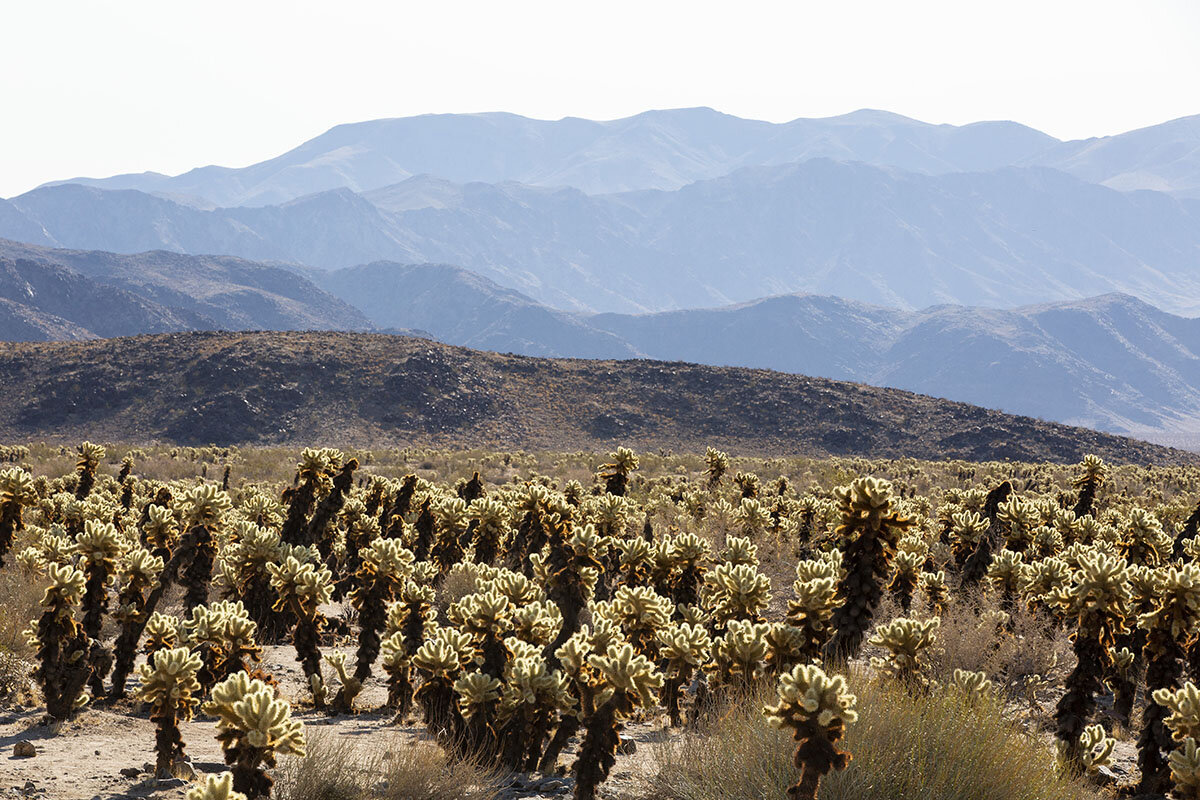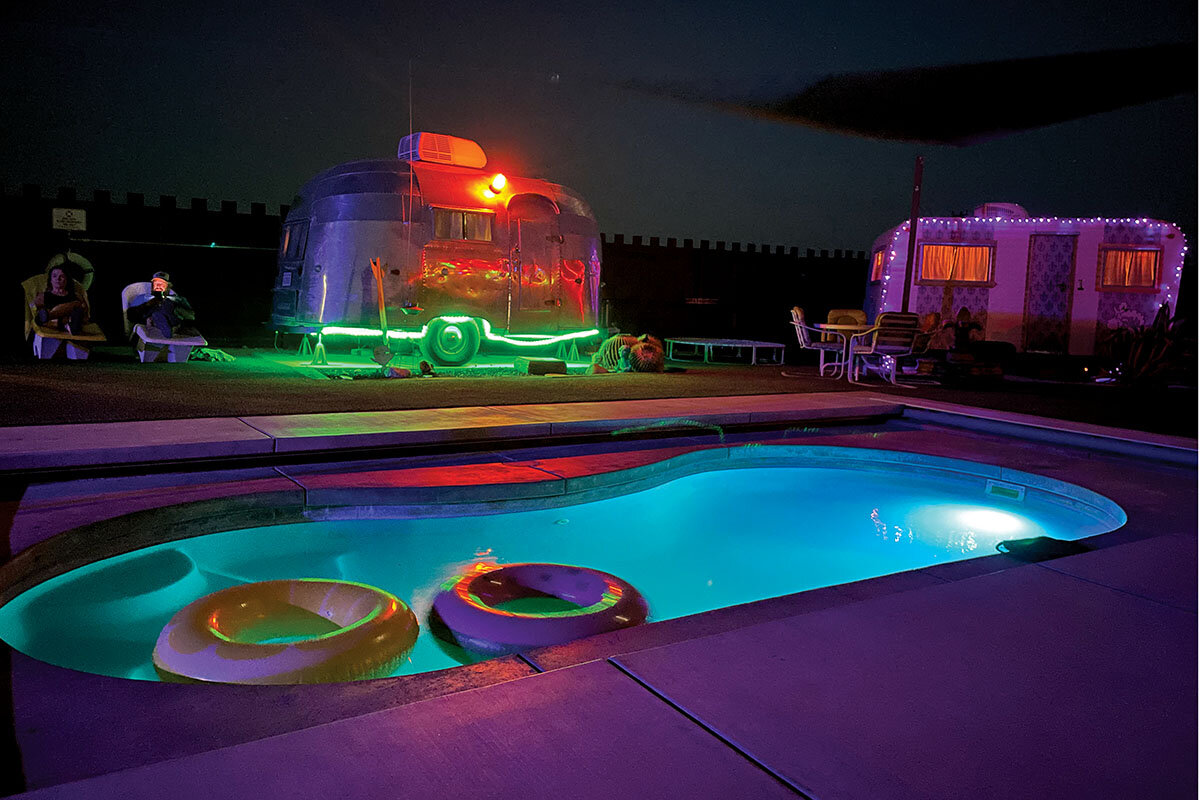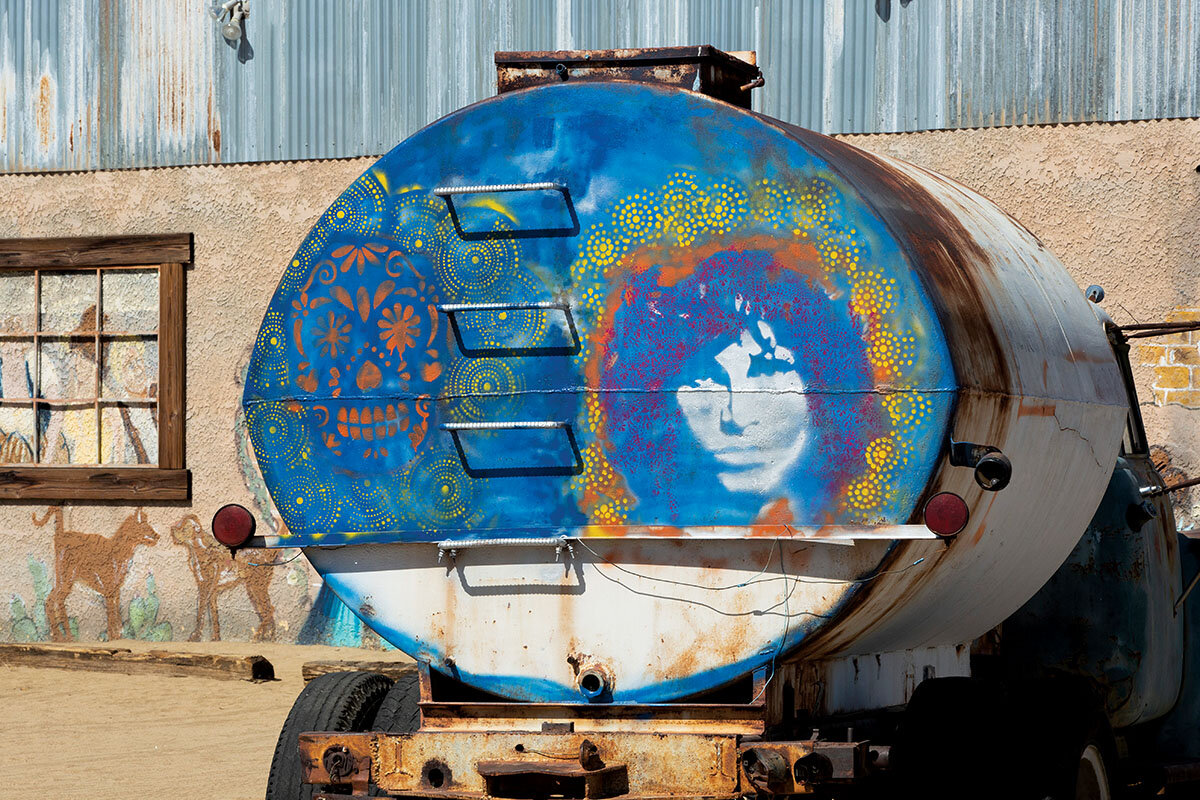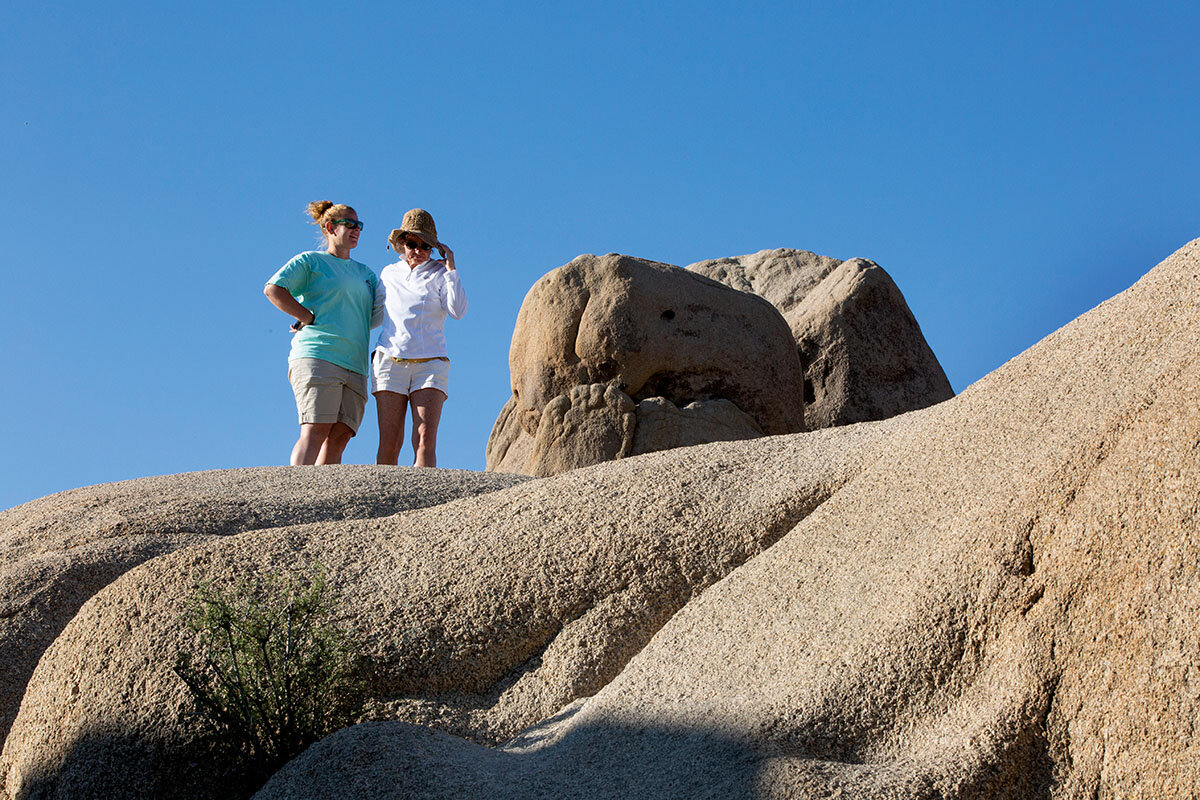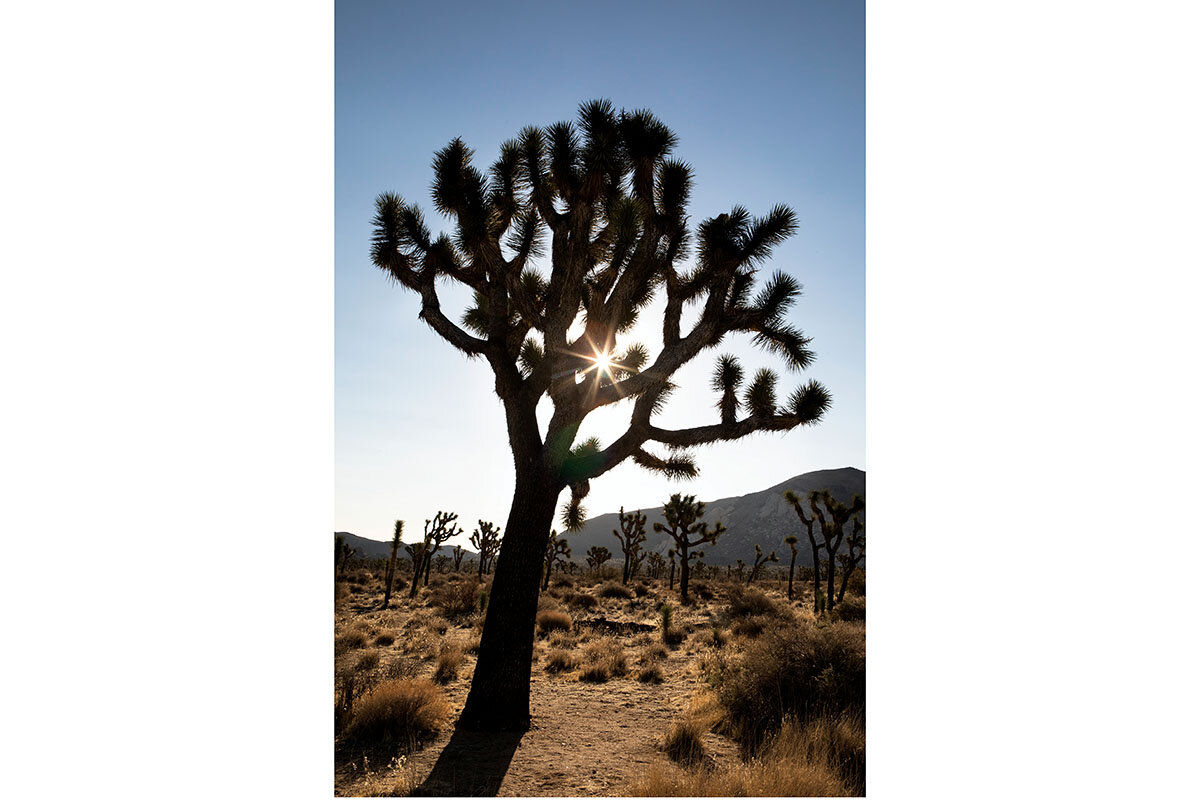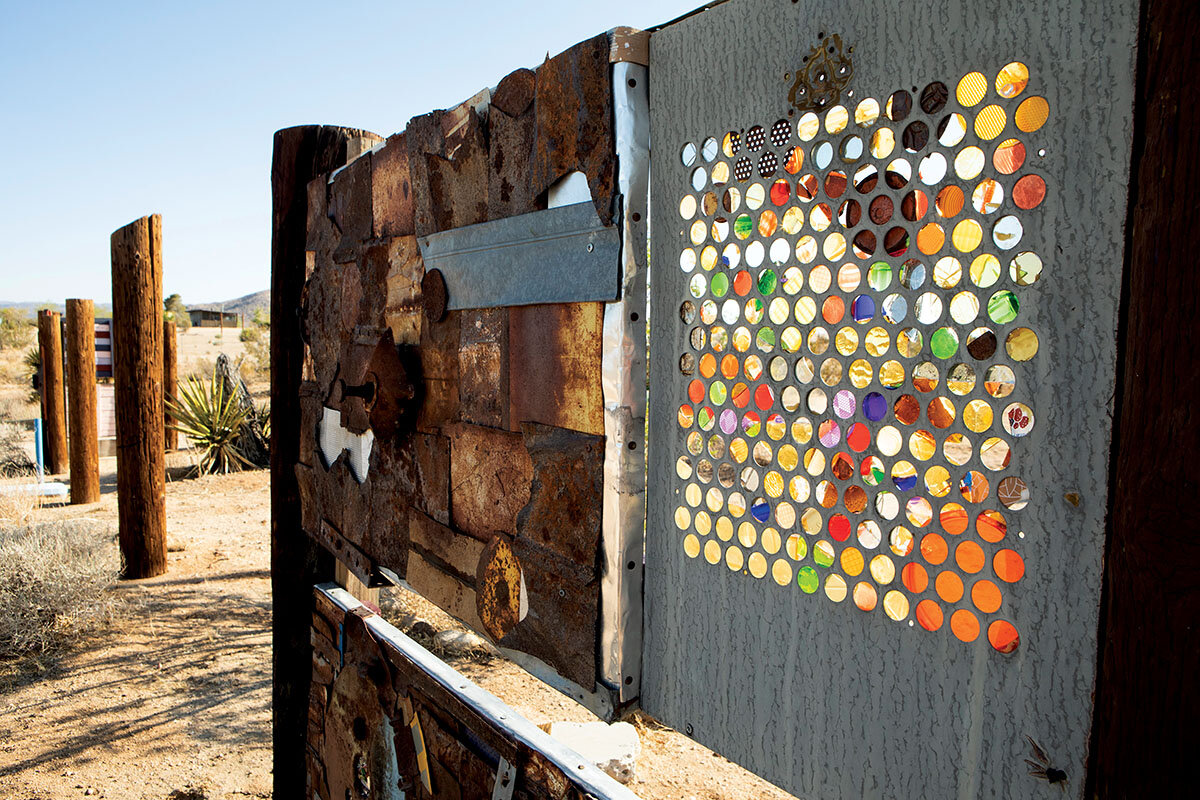Joshua Tree in pictures: Visions and vistas in the high desert
Loading...
| Joshua Tree, Calif.
Joshua Tree, they say, is a state of mind. But when the temperature is 109 degrees Fahrenheit – as it is on this June visit – it’s the state of one’s body that demands attention.
We carry water everywhere, start thinking no hat brim is too broad, hunt shade like it’s the Grail. We’re in the Mojave Desert; even a breeze feels like the hot breath of an unfriendly animal.
But then you get used to it. Evening falls. The temperature drops to 98 degrees and you hear people say they come for the cool. (Indeed, Palm Springs had been 118 degrees when we passed it 34 miles down the road.) Then you enter Joshua Tree National Park at sundown or sunrise, or you find yourself the lone wanderer at the Noah Purifoy Outdoor Desert Art Museum of Assemblage Art, or you sit under a veranda on the ghostly main street of a long-disused movie set, and the place begins to work on you.
Why We Wrote This
The desert can evoke adjectives like punishing and oppressive. But in Joshua Tree National Park, our photographer and essayist find an irresistible allure – of art, of beauty, and of a landscape that feels older than time.
Contradictions emerge. Both Joshua Tree the town and Joshua Tree the park are strangely new – the national park designation was conferred only 27 years ago, and until 1943 the town had no post office. Yet the landscape feels older than time, and remorseless, and reduced to mere elements: rock, sand, and sage, against which the famous Joshua trees themselves stand like miracles.
And then there’s the vibe. “It’s a little bohemian paradise – the yin to Palm Springs’ yang,” claims a friend of ours, Ted Nelson, who’d spent the winter of 2020-21 falling in love with Joshua Tree while remotely running his marketing firm from a rented dwelling on the edge of town. In November, when he’d arrived, he alternated Zoom calls with runs in the desert and explorations by all-terrain vehicle. At night there were coffeehouses, art galleries, music shows. Tattoos were legion.
In June it was quieter than that, we tell him later. “Yeah, well,” says Mr. Nelson after describing the splendor of November highs in the 70s. “Maybe don’t go to the desert in June?”
Noted. And yet: Could it be that summer is exactly when to go to the desert – when it is most itself?
We’ll ponder that. As soon as we can find some air conditioning.





